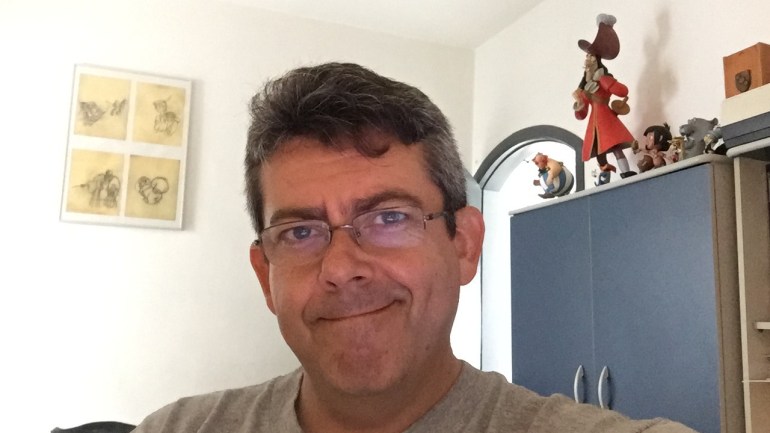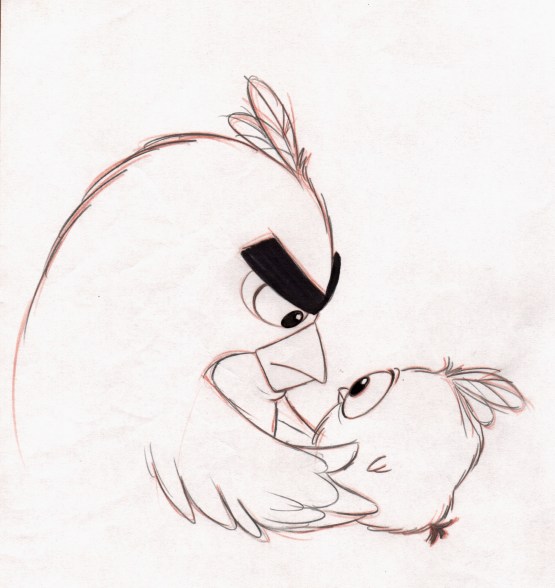Animation Desk was created with the goal of providing a handy tool for people of all ages to create their first animation. As this 2D frame animation app has become more popular, we have begun to receive questions about the animation industry, specifically about what animation technical skills are needed and what jobs there are to strive for in the industry.
In response to these questions, we thought it would be a great idea to get in contact with animation professionals with real industry experience to help quench our users’ thirst for knowledge.
This led to us reaching out to Sandro Cleuzo on Instagram. Even as a busy professional animator with tons of experience and prestige under his belt, Sandro graciously took the time to join us for an “Ask Me Anything” session. This interview allowed us to gain more insight into his experience as a character designer, animator, and storyboard artist.
Throughout the entire experience, Sandro was a friendly, helpful, and kind mentor and we left with a lot of information and responses we hope you’ll enjoy! So much so, in fact, that we need to divide this interview coverage into 3 parts (including this post) just to make sure we can share everything thoroughly. So, make sure you stay tuned and hit subscribe for an update when the next part of this interview goes live!
About Sandro Cleuzo

To begin, let’s highlight a bit of Cleuzo’s background and how he started his career as an animator in the industry. As Cleuzo shared regarding his beginnings, “I had a great time learning the craft when I started working in a small animation studio that produced TV commercials.” From there, Sandro would eventually travel to Ireland and work for Don Bluth and his studio. A few years down the line, he would find his way to Disney.
You may know some of his work at Disney with some iconic characters. “Disney’s The Emperor’s New Groove would be one that I truly enjoyed,” stated Cleuzo. “I animated the Theme Song Guy, The Waitress, the old man, and the official that presents Kuzko with the choices for the brides.” He would also help with character model sheets with the Emperor’s New Groove being one of many projects he would help work on at Disney.
While Cleuzo has been away from Disney for a while now, he still describes himself as the “old Disney guy.” This perspective is due to his deep admiration of Disney’s works as a kid, which can be seen in his sophisticated drawing skill that radiates warmth. That love for those films and Disney art persists to this day. He would also draw influence from other animated films in his childhood. For example, the Don Bluth studio we mentioned earlier? Working there was a childhood dream that Cleuzo was able to fulfill when he made it into the animation industry.
“In the 80s, I also saw The Secret of Nimh by Don Bluth and I fell in love with that and told myself I wanted to work for him one day, which I did in 1990.” Sandro has had an eventful career already in animation, and he’s still just getting started. For the next few years, he’ll be focusing on producing his own movies.
What is Character Design?
For some background into some of the work that Sandro does, let’s discuss the role of a character designer.
So, what is character design? Character design is the process of creating the look for individual characters, and in this context, for animated productions. However, character design is prevalent in nearly any visual medium that uses characters. Video games and illustration books make thorough use of character designs. Designs are generated through ideas from many different sources, like director details, including personality traits and defining physical features.
This process of gathering ideas and creating early designs produces concept art, which leads to important model sheets for production. Model sheets provide the standardized appearance of a character, including aspects such as proportions, poses, and other key characteristics. This approach is important because many animators may work on the same character throughout production, and you want them to produce similar if not identical results.
Character Design is important because it helps tell the story of the character and immerse you in the world. Without the expressions, clothing, appearance, personality, and physical traits of characters, many of the stories you know and love would feel much hollower.
For a Disney example, consider Mickey Mouse. The idea to put those simple gloves on Mickey would eventually lead to them being iconic all over the world. Mickey’s gloves are a simple addition that is now character-defining.
>>Read more about “How to Become A Character Animator“
What Does a Storyboard Artist Do?
Before any animation is done and before any images are made for production, a script is created. A script details the story that will be told, offering key details that will help an artist envision what these events will look like animated. The artist responsible for the first transformation of this script into images is the storyboard artist.
A storyboard artist will create a storyboard from a script. A storyboard is a series of 2D images that showcase the plot and provide a sense of the visual direction of the story while making sure that the scenes flow logically.
A storyboard is important because it sets the groundwork for what animators will then use to produce the full-motion animation for the production. An animatic, or preliminary version of the movie or film, will usually come before the final product that gives further information for animators to reference.
Storyboards have a role beyond just animated films, as they are used in games and even live-action films. Whenever you want to plan out a story and provide some rough estimates of the visuals and direction, you’ll want to use a storyboard.
Heads Up! Our interview with Sandro Cleuzo continues in Part 2!
This was just a brief introduction to Sandro Cleuzo and his career, along with a look into his work responsibilities. But there is much more to learn from Cleuzo about the animation industry.
We received hundreds of responses in our “Ask Me Anything” session with Sandro, and we picked the ones that best represented the whole to have Sandro answer them with his own experience! This was an incredibly exciting and enlightening interview, and we have only just touched on the surface of it so far!
That’s why we have split this interview up into multiple parts so that we can give all the details the right focus, and make sure all the great insight has its time to shine. If you want updates on the upcoming posts, then remember to stay tuned on Kdan Blog or download Animation Desk, so you’re notified when they go up!
We hope you enjoyed this introduction to Sandro Cleuzo, and we hope you’re excited to hear more soon!
.png)


